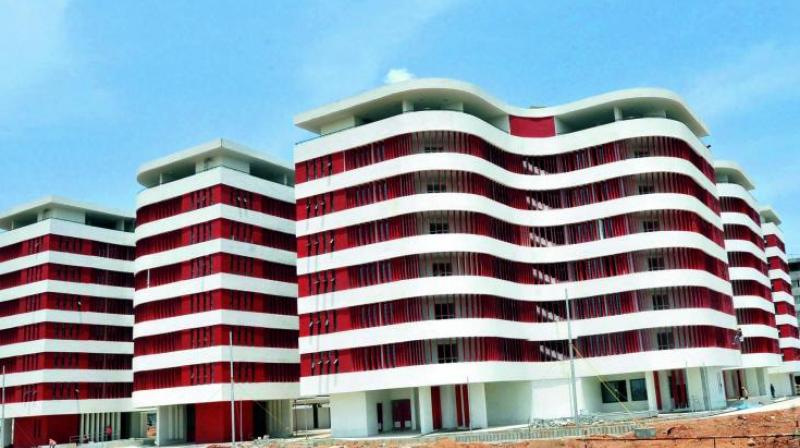Using sugar, salt as catalyst to produce biofuel precursors
This Research by IIT Hyderabad on the cheap and efficient catalyst can enable this conversion.

Chennai: Researchers at the Indian Institute of Technology (IIT) Hyderabad, have developed a method to synthesize a catalyst that can convert chemicals derived from biomass into bio-fuel precursors. This catalyst comes with better efficiency and selectivity compared to commercial catalysts to produce the desired C15 oxygenated hydrocarbon, a precursor to diesel and jet fuel.
The research was led by Dr Atul Suresh Deshpande, Assistant Professor, Department of Materials Science and Metallurgical Engineering, IIT Hyderabad, and Prof. Sunil Kumar Maity, Department of Chemical Engineering, IIT Hyderabad, along with research students D. Damodar, K. Alekhya and Dr V. Mohan.
This development is especially significant for states like Uttar Pradesh and Andhra Pradesh - Telangana duo, the first and second largest producers of corn in the country respectively, as it would provide corn farmers additional revenue. The corncob waste, which can be converted to valuable fuel is currently burnt by farmers.
Bio-fuels are typically derived from plant wastes like corn cobs in various steps. These reactions require special enablers or catalysts, such as activated carbon which need to be heated to high temperatures. The need for such high energy not only increases the cost of the catalyst, but also negates the attempts to carbon-neutrality in developing the bio-fuel. The IIT Hyderabad team has developed a process that can produce carbon catalysts at room temperatures using simple materials like sugar, sulfuric acid and salt.
In order to control the microstructure of carbon during the exothermic dehydration of sugar, the researchers added common salt. Salt helps in controlled dehydration of sugar, which leads to the formation of carbon nanoplates - plate-like structures that are a hundred thousand times smaller than the human hair. Not only is this nanostructure important because of the large surface area, but the surface is also covered by sulfonate groups that make it an active catalyst.
The researchers did not stop with the speculation, they proved the catalytic power of their carbon nanoplates in the reaction between furfural and 2-methyl furan. Their catalyst showed better efficiency and selectivity than commercial catalysts to produce the desired C15 oxygenated hydrocarbon, a precursor to diesel and jet fuel.
Speaking about his research Dr Atul Suresh Deshpande said, “The dehydration of sugar by concentrated sulfuric acid is high school chemistry. This reaction is highly exothermic, that means, intense heat is released during the reaction spontaneously, which helps in turning sugar into carbon without external heating. But this process is not well controlled and the resultant carbon does not have a uniform microstructure and catalytic prowess.”
Dr Sunil Kumar Maity added, “Due to the low cost of precursors with practically zero energy input and simplicity of reaction, this process of producing carbons nanoplates can be easily adapted for large-scale commercial production.”
This Research by IIT Hyderabad on the cheap and efficient catalyst can enable this conversion. This development will also play a key role in the reduction of carbon footprint in the automobile/aviation sector, say researchers.
Their Research paper has been published in the journal, ACS Sustainable Chemistry and Engineering.

